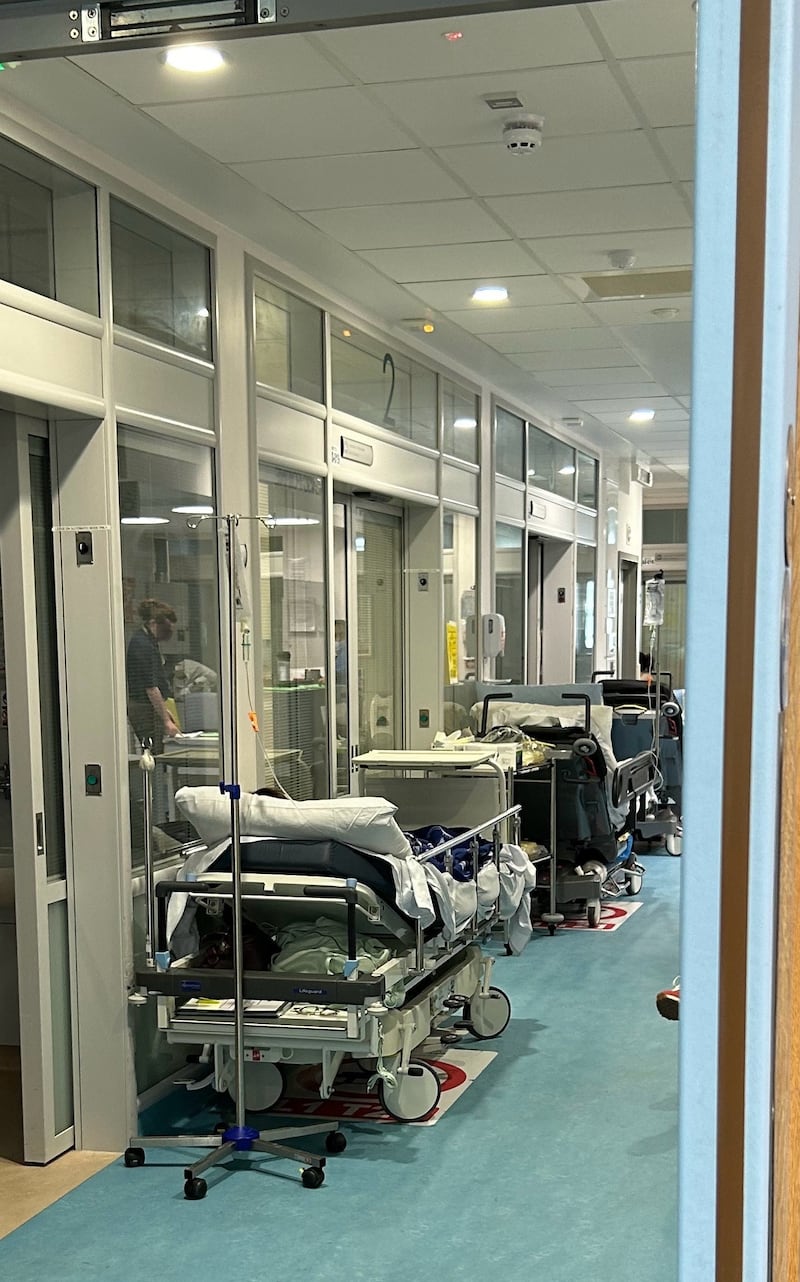Long-standing problems persisted at University Hospital Limerick (UHL) on Wednesday, a day after the Minister for Health and HSE chief executive announced the appointment of a team to devise a plan to “ease overcrowding and pressures” in one of the State’s busiest emergency departments.
UHL remained Ireland’s most overcrowded hospital on Wednesday, with 102 patients on trolleys and in wards awaiting beds, according to the Irish Nurses and Midwives Organisation’s (INMO) count. This represented a reduction of 21 people on the previous morning, but the total was 30 ahead of the next most overcrowded emergency department, at Cork University Hospital.
A number of patients could be seen lying on trolleys, backed up against one another, inside zones A, B and C in the emergency department (ED), which came in for significant criticism last week.
Harrowing details of “systemic failures, missed opportunities and communication breakdowns” in the hospital before the death of teenager Aoife Johnston in 2022 were heard at an inquest. Emergency medicine consultant Dr James Gray told the coroner the ED was then, and still is, a “death trap” due to overcrowding and understaffing.
READ MORE

Inside the EDon Wednesday, patients were being offered little by way of privacy or dignity as they were squeezed together on trolleys. Relatives stood awkwardly bedside them or sat on the end of trolleys or on chairs in the corridors, having to move when staff were passing through and as other trolleys were wheeled in and out of the department.
Some patients reported being surprised by the reduction in the numbers inside the ED zones, where conditions the previous day were described as “extremely bad”. A number of those waiting to see a doctor in the ED reported being “quickly” triaged in to the department. About 20 people were in the hospital’s reception area waiting to be triaged at around midday.
However, hospital sources said there can be a lull in overcrowding midweek before the issue escalates again, particularly at weekends. “Perhaps people are too scared to come in after all of the shocking evidence we heard during [Aoife Johnston’s] inquest,” one said.
In response to questions about what the latest measures introduced to ease ED pressures were, UHL said it had increased staffing and “enhanced a number of alternative care pathways to reduce demand and improve patient flow, including additional recruitment of consultants” and non-consultant hospital doctors.
It said a geriatric emergency medicine unit for people aged over 75 is now operating around the clock on weekdays and has been expanded, and it was collaborating with the National Ambulance Service with a view to delivering safe care at home to over-65s and reducing the number of ambulances bringing patients directly to the ED.
UHL said recently-announced additional investment would see “safer staffing being extended to all wards in UHL”, increased bed capacity, and the extension of opening hours of the region’s three medical assessment units “to 24/7 on a phased basis”.
“A new GP and advanced nurse practitioner ‘on the door’ service has commenced at the ED in an effort to further alleviate congestion in the department,” it added.
- Sign up for push alerts and have the best news, analysis and comment delivered directly to your phone
- Find The Irish Times on WhatsApp and stay up to date
- Listen to our Inside Politics podcast for the best political chat and analysis












